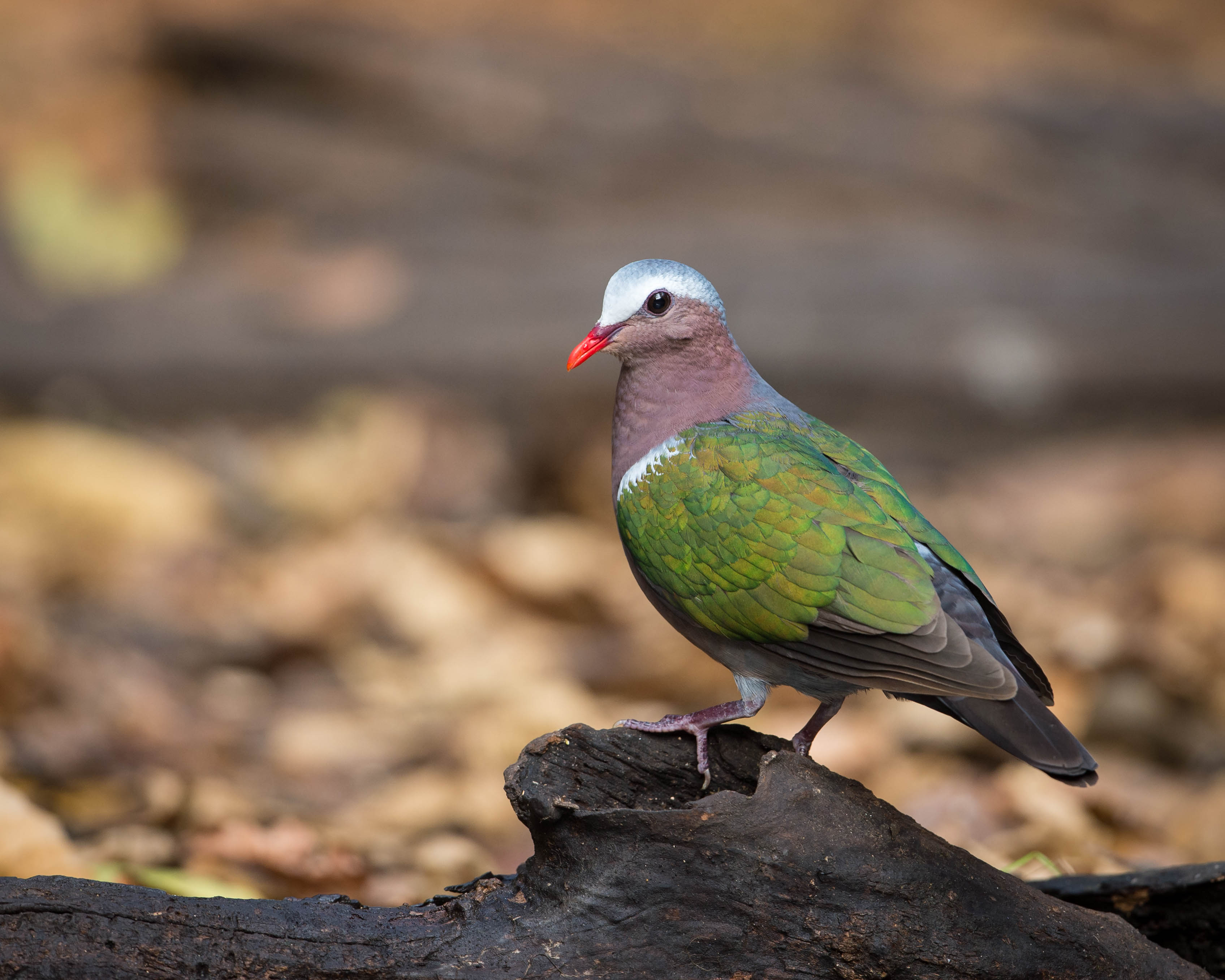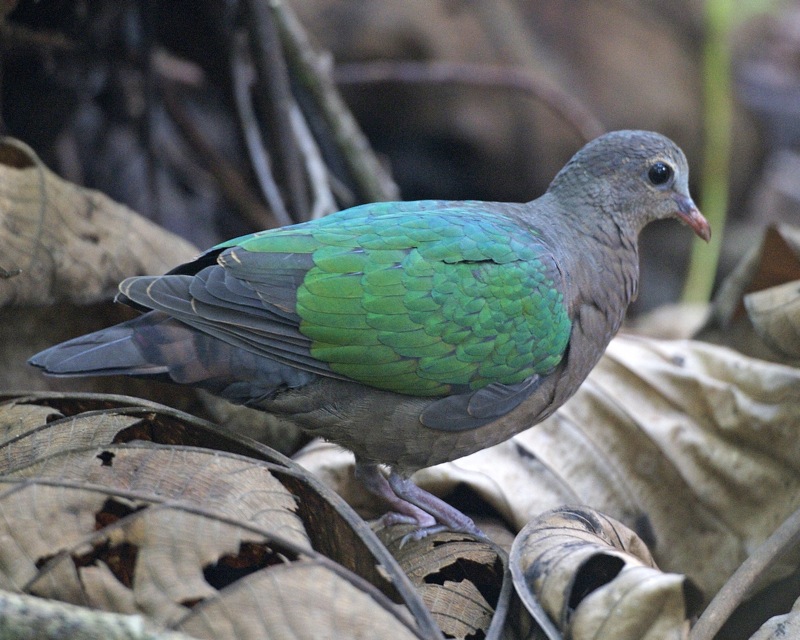Emerald Dove (Chalcophaps Indica Indica) on:
[Wikipedia]
[Google]
[Amazon]
The common emerald dove (''Chalcophaps indica''), also called Asian emerald dove and grey-capped emerald dove, is a widespread resident breeding pigeon native to the tropical and subtropical parts of the Indian Subcontinent and Southeast Asia. The dove is also known by the names of green dove and green-winged pigeon. The common emerald dove is the state bird of the Indian state of Tamil Nadu. The

 The common emerald dove is a stocky, medium-sized pigeon, typically in length. The back and wings are bright emerald green. The flight
The common emerald dove is a stocky, medium-sized pigeon, typically in length. The back and wings are bright emerald green. The flight
Xeno-canto: audio recordings of the common emerald dove
{{Taxonbar, from=Q795565 common emerald dove Birds of South China Birds of South Asia Birds of Southeast Asia common emerald dove common emerald dove Birds of Myanmar
Pacific emerald dove
The Pacific emerald dove or brown-capped emerald dove (''Chalcophaps longirostris'') is a pigeon which is a widespread resident breeding bird in the tropical and sub-tropical parts of Indonesia to northern and eastern Australia. It was formerly c ...
and Stephan's emerald dove
Stephan's emerald dove (''Chalcophaps stephani'') is a species of bird in the family Columbidae. It is found in Sulawesi, New Guinea and the Solomon Islands
Solomon Islands is an island country consisting of six major islands and over 900 ...
were both considered conspecific.
Taxonomy
In 1743, the English naturalist George Edwards included a picture and a description of the common emerald dove in his ''A Natural History of Uncommon Birds''. He used the English name "Green Wing'd Dove". His drawing was made from a live bird at the home a merchant in Rotherhithe near London. Edwards was told that the dove had come from the East Indies. When in 1758 the Swedish naturalist Carl Linnaeus updated his ''Systema Naturae
' (originally in Latin written ' with the ligature æ) is one of the major works of the Swedish botanist, zoologist and physician Carl Linnaeus (1707–1778) and introduced the Linnaean taxonomy. Although the system, now known as binomial nomen ...
'' for the tenth edition, he placed the common emerald dove with all the other pigeons in the genus ''Columba
Columba or Colmcille; gd, Calum Cille; gv, Colum Keeilley; non, Kolban or at least partly reinterpreted as (7 December 521 – 9 June 597 AD) was an Irish abbot and missionary evangelist credited with spreading Christianity in what is toda ...
''. Linnaeus included a brief description, coined the binomial name
In taxonomy, binomial nomenclature ("two-term naming system"), also called nomenclature ("two-name naming system") or binary nomenclature, is a formal system of naming species of living things by giving each a name composed of two parts, bot ...
''Columba indica'' and cited Edwards's work. The specific epithet
In taxonomy, binomial nomenclature ("two-term naming system"), also called nomenclature ("two-name naming system") or binary nomenclature, is a formal system of naming species of living things by giving each a name composed of two parts, bot ...
''indica'' is Latin for "Indian" and is used by Linnaeus to denote the East Indies. The species is now placed in the genus ''Chalcophaps
''Chalcophaps'' is a genus of small doves, commonly called ''emerald doves'', that are found in Indomalaya and Australasia.
Taxonomy
The genus ''Chalcophaps'' was introduced by the English ornithologist John Gould in 1843. The genus name comb ...
'' that was introduced by the English ornithologist John Gould in 1843.
Six subspecies
In biological classification, subspecies is a rank below species, used for populations that live in different areas and vary in size, shape, or other physical characteristics (morphology), but that can successfully interbreed. Not all species ...
are recognised:
* ''C. i. indica'' ( Linnaeus, 1758) – India to south China, Malaysia, Philippines, Indonesian and west Papuan islands
* ''C. i. robinsoni'' Baker, ECS, 1928 – Sri Lanka
* ''C. i. maxima'' Hartert
Ernst Johann Otto Hartert (29 October 1859 – 11 November 1933) was a widely published German ornithologist.
Life and career
Hartert was born in Hamburg, Germany on 29 October 1859. In July 1891, he married the illustrator Claudia Bernadine E ...
, 1931 – Andaman Islands
The Andaman Islands () are an archipelago in the northeastern Indian Ocean about southwest off the coasts of Myanmar's Ayeyarwady Region. Together with the Nicobar Islands to their south, the Andamans serve as a maritime boundary between th ...
* ''C. i. augusta'' Bonaparte, 1855 – Nicobar Islands
The Nicobar Islands are an archipelagic island chain in the eastern Indian Ocean. They are located in Southeast Asia, northwest of Aceh on Sumatra, and separated from Thailand to the east by the Andaman Sea. Located southeast of the Indian s ...
* ''C. i. natalis'' Lister, 1889 – Christmas Island (Indian Ocean)
* ''C. i. minima'' Hartert, 1931 – Numfor, Biak and Mios Num islands (off north New Guinea)
Description

 The common emerald dove is a stocky, medium-sized pigeon, typically in length. The back and wings are bright emerald green. The flight
The common emerald dove is a stocky, medium-sized pigeon, typically in length. The back and wings are bright emerald green. The flight feather
Feathers are epidermal growths that form a distinctive outer covering, or plumage, on both avian (bird) and some non-avian dinosaurs and other archosaurs. They are the most complex integumentary structures found in vertebrates and a premier ...
s and tail are blackish, and broad black and white bars show on the lower back in flight. The head and underparts are dark vinous pink, fading to greyish on the lower belly. The eyes are dark brown, the bill bright red and legs and feet rufous.
The male has a white patch on the edge of the shoulders and a grey crown, which the female lacks. Females will tend to have a browner complexion with a grey mark on the shoulder. Immature birds resemble females but have brown scallops on their body and wing plumage.
Distribution and habitat
This is a common species in tropical forests and similar dense wet woodlands, farms and mangroves. It builds a scant stick nest in a tree up to five metres and lays two cream-coloured eggs.Behaviour and ecology
Emerald doves usually occur singly, pairs or in small groups. They are quite terrestrial, often searching for fallen fruit on the ground and spending little time in trees except when roosting. They eat seeds and fruits of a wide variety of plants and are generally tame and approachable. Its flight is fast and direct, with the regular beats and an occasional sharp flick of the wings which are characteristic of pigeons in general. It often flies low between the patches of dense forest it prefers, but when disturbed will frequently walk away rather thanfly
Flies are insects of the Order (biology), order Diptera, the name being derived from the Ancient Greek, Greek δι- ''di-'' "two", and πτερόν ''pteron'' "wing". Insects of this order use only a single pair of wings to fly, the hindwing ...
. They are particularly good weavers when flying through forests. When flying they expose a buff underwing and a chestnut colour of their flight feather
Feathers are epidermal growths that form a distinctive outer covering, or plumage, on both avian (bird) and some non-avian dinosaurs and other archosaurs. They are the most complex integumentary structures found in vertebrates and a premier ...
s.
The call is a low soft moaning cooing consisting of about six to seven coos starting quietly and rising. They also call a nasal "hoo-hoo-hoon". Males perform a bobbing dance during courtship.
References
* Grimmett, ''Birds of India'', Inskipp and Inskipp,External links
Xeno-canto: audio recordings of the common emerald dove
{{Taxonbar, from=Q795565 common emerald dove Birds of South China Birds of South Asia Birds of Southeast Asia common emerald dove common emerald dove Birds of Myanmar